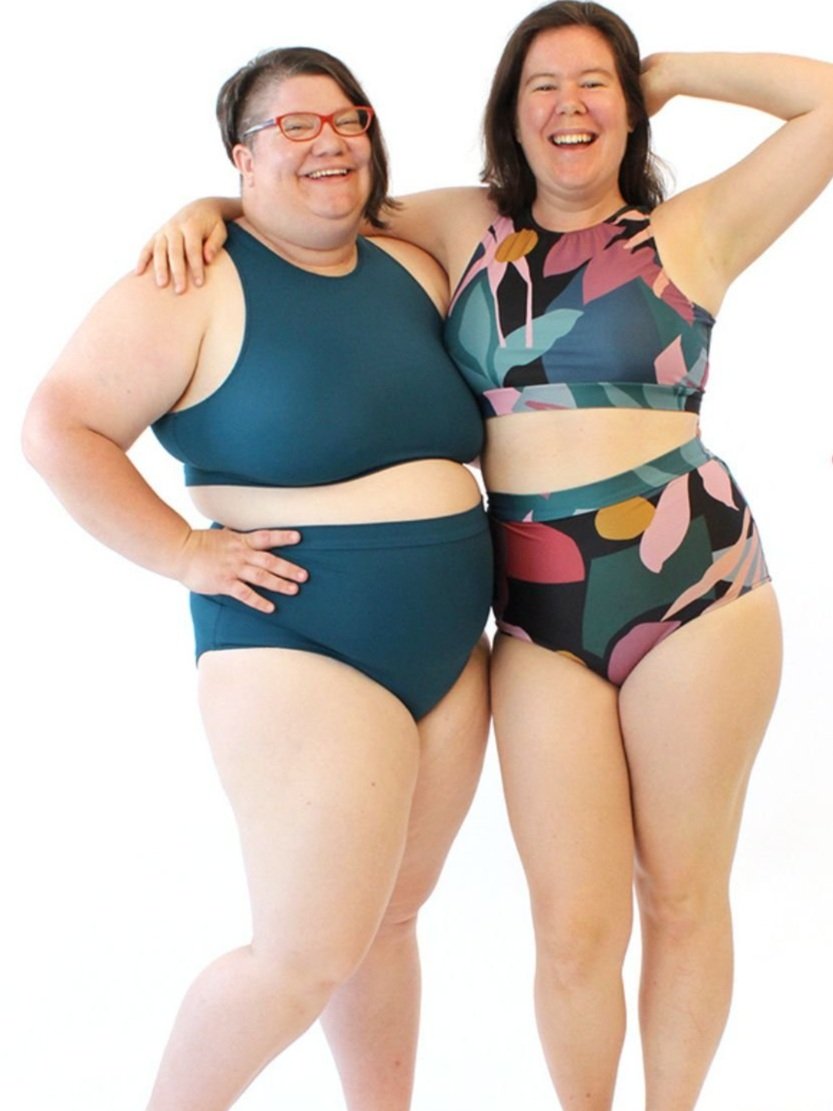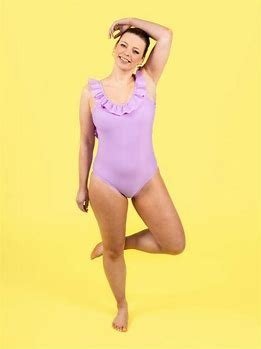Here’s something shocking that I learned about sewing swimwear: It’s not that hard! There are several well-designed swimsuit patterns to choose from. Sources for swim fabric are more plentiful than there have ever been. All you need are the proper tools and you’ll be on your way to producing lovely swimsuits at a very reasonable cost. By, the way, we now have a Swim Wear Class I’m teaching! The following are my recommendations:
Time To Sew
by Martha West
1. Choose a beginner friendly pattern to start with.
Your pattern should be rated as an easy/beginner pattern. It should be one that runs true to size and has had a track record of success with the greater sewing community. The best way to figure out its success is to check Instagram. If there are hundreds of smiling sewists showing off their creations, you are on the right path. (My favorites: Megan Nielsen Cottesloe, Helen’s Closet Sandpiper, Tilly and the Buttons Coralie)
2. Choose your size based on your measurements and the size recommended by the pattern you’ve chosen. ALL patterns have their own sizing so don’t get hung up on what your RTW size is.
3. Choose swim fabric! You must have an appropriate weight and stretch factor for a swimsuit to work. Don’t bother with sewing something in your stash that’s stretchy. Swim fabric is its own beast, and it has unique properties. You’ll need at least 50% stretch in both directions, and some patterns call for 70% stretch. Usually, you’ll be looking for 90/10 nylon/spandex or 90/10 polyester/spandex fabric. Check your pattern for their requirements. (Good sources are Fabric Fairy and Vogue Fabrics.
4. Choose swim lining fabric! You can use fabric designed as a swimwear lining, or you can use your exterior fabric as the lining. (Good sources are Fabric Fairy, Vogue Fabrics, and Joann)
5. Choose swim elastic. There are two types of swimsuit elastic: polyester/latex and rubber. If you’re just beginning, choose polyester/latex swimwear elastic rather than rubber elastic. The rubber elastic holds up much better over time in chlorine, but it is tricky to sew. (I only use Fabric Fairy elastic)
6. Use a Microtex sewing machine needle. I recommend purchasing 80/12 and 90/14 sizes. That way, if you need a heavier-weight needle for sewing the elastic, you will have it on hand.
7. Use your regular sewing machine and a regular zigzag stitch. Avoid using a serger for your initial suit. There is no need to serge the edges of swim fabric as it never frays and serged edges are more difficult to rip if alterations are needed.
8. Plan on purchasing double the amount of fabric you’ll need so you can make a “muslin” fitting version. You’ll need to double the exterior and lining fabric, but you really can’t make a test swimsuit out of a non-swim fabric and have accuracy.
9. Don’t bother with your iron. Swim fabrics don’t take the heat of the iron or a press very well, so don’t waste time pressing seams. Betcha never thought you’d hear me say that!




